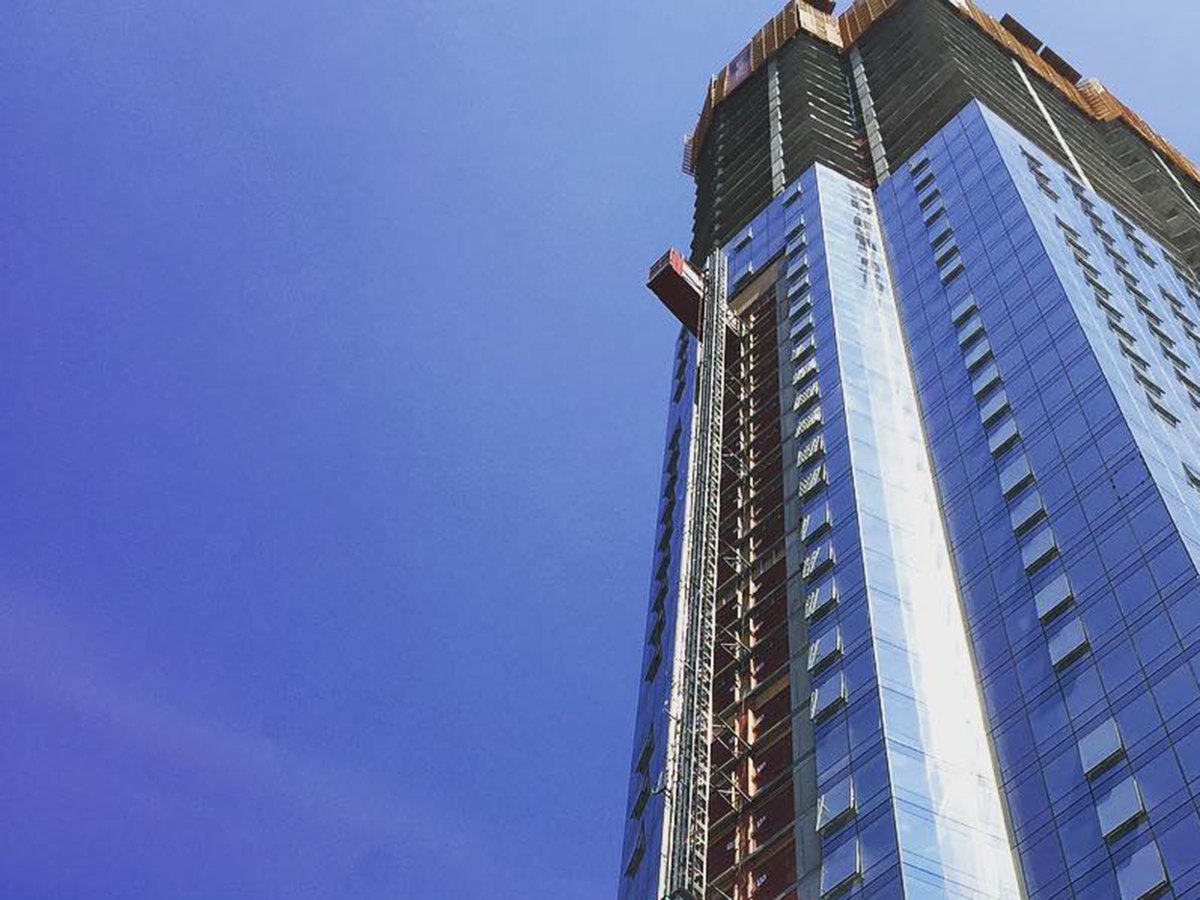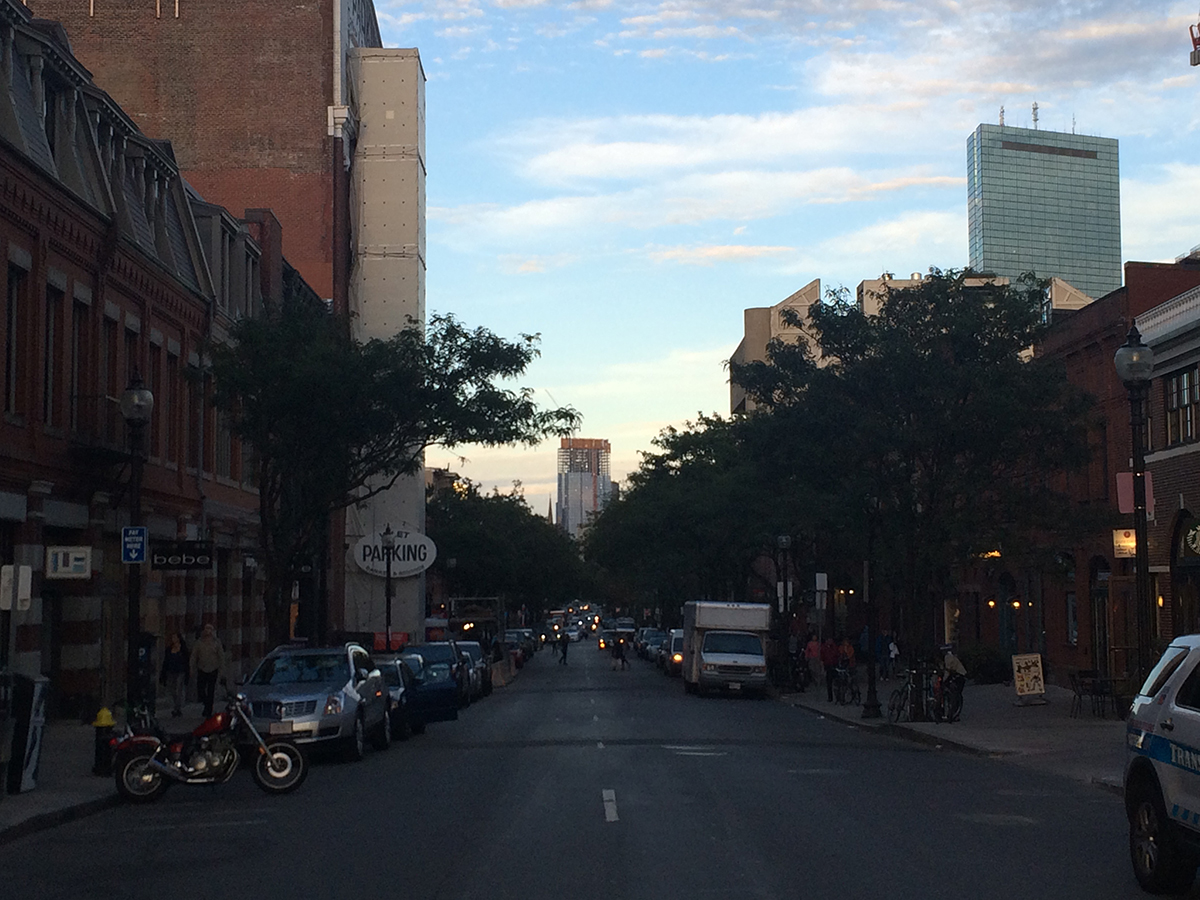The Millennium Tower Is Boston’s Future—And Certainly Not Mine

Photo by Matthew Dailey on Flickr/Creative Commons
Walking across the Longfellow Bridge from Central Square to Back Bay at night, the brightest structure on either side of the Charles River is the nearly completed Millennium Tower, though it is doubtful the building’s evening glow will be as ostentatious once its industrial work lights are plucked from its beams. At 60 stories and 685 feet, it will be the tallest residential building in Boston’s largely unremarkable skyline and third-tallest overall, behind “The Skyscraper Formerly Known as the Hancock Tower” and the Pru.
Born under the auspices of the late Tom Menino and built by one-time Olympic ringleader John Fish’s Suffolk Construction, the Millennium Tower has been heralded as the “most important residential building in Boston since the Ritz-Carlton,” a name evoking comparable excess. As of last week’s topping-off ceremony, 90 percent of its units were sold following a series of deals worth hundreds of millions. To market the $37.5 million penthouse crowning the luxury high-rise, developers sent a drone up 685 feet, to help potential buyers wrap their well-coiffed noggins around just how spectacular their views of Boston would be.
Those inhabiting the Millennium Tower home will enjoy a litany of amenities: Chef Michael Mina’s new, closed-to-the-public restaurant, as well as a private dining service overseen by the James Beard Award-winning chef, including “cooking classes, video demonstrations from Mina, and a private screening room, where the chefs will prepare special ‘tailgate’ menus on game days”; a tailored personal training program; round-the-clock concierge; and of course, valet parking.
There was a time when the erection of a skyscraper was a reason for intense civic pride. It meant the city was growing, business was booming, and everything pulsed to Gershwin’s Rhapsody in Blue. It was a symbol, wrought from steel and glass, of prosperity and strength. The structure would be a new landmark—something new to emblazon on postcards and T-shirts, to include in your directions to ambling tourists, to see from a distance, forehead pressed against a bus window and think, “I’m back home.” If a city’s skyline is a metonym for its identity, any new addition must advance its character without subverting it.
The Millennium Tower, in this sense, is a failure.
It is a monument to Boston’s future, and it’s chilling. At once, the Millennium Tower is both soulless and unattainable. Its topping-off ceremony, attended by Mayor Marty Walsh, came at a time when the city is careening toward a housing crisis. Its middle class is vanishing. Rents are surging and wages are stagnant. Boston has more luxury housing than it knows what to do with, yet a majority of the 2,600 units to be built before the year’s end will be marketed to the city’s best-off. Meanwhile, our public transportation system—the means by which many of us commoners arrive at our humble nine-to-fives—lay in disrepair, rotting in the ground below.
How on Earth, in my shared garden apartment and journalist’s salary, am I supposed to be enthused about the Millennium Tower—appropriately named, as it will take a millennium or two before I can afford the “high-gloss Poggenpohl cabinets and a 30-inch wine cooler” featured in one of its model kitchens? What civic pride can I take in all its preparations of wagyu beef, offered only to those with a dispensable $850,000 or more?
From 685 feet in the sky, the problems weighing down us ants lose their gravity.

Photo by Kyle Clauss
The Millennium Tower has this ineffable foreignness about it; the building doesn’t rise from the 19th century city below, so much as it scoffs at it from above. Perhaps this is because Millennium Partners, the building’s developer, are based in New York. (The Prudential Tower was developed by Boston Properties, and 200 Clarendon, by John Hancock Insurance.) When standing at the mouth of Newbury Street at Massachusetts Avenue, the tower is situated at the horizon line. It doesn’t serve as Newbury’s logical conclusion on its way up to the sky, but makes a crude reflecting pool of the historic thoroughfare.
Yet the Millennium Tower is already claiming to be “Boston’s most unique and iconic property.” Here, try this little experiment next time you’ve got a pen and a cocktail napkin: Ask someone to draw the Boston skyline. You’ll almost certainly get a blocky Pru, perhaps a jagged rhombus of a Hancock Tower. I’ll bet you every cent in my meager savings account they won’t draw the Millennium Tower, nor know what that is if you ask why they didn’t draw it. Chalk it up to marketing braggadoccio, but you’d be hard-pressed to find a Bostonian truly excited about this thing.
When I look at Boston’s skyline 20 years from now, I will find no nostalgia. I will only see an enduring symbol of what drove me out.

